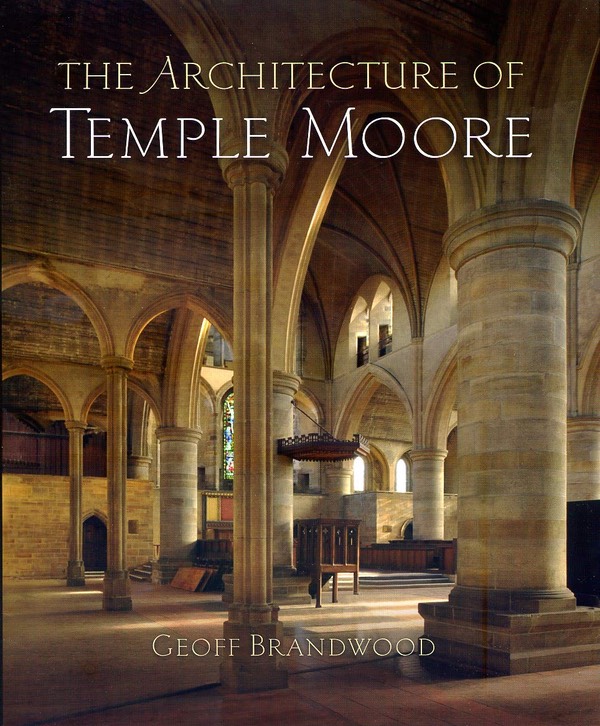Temple Moore was one of the most highly regarded church architects of his day. His work is part of the social, architectural and political history that shaped our urban and rural landscapes, and yet his work is not now widely known.
Happily there are a number of sources where Temple Moore enthusiasts can find out more about his work, his patrons and clients, and his place in the Gothic Revival.
Books
Brandwood, Geoffrey K. (2019); Temple Moore, An Architect of the Late Gothic Revival; Paul Watkins Publishing ISBN 1907730753
The key reference book for Temple Moore enthusiasts, this is a comprehensive and scholarly look at Moore's buildings and career.

Stamp, Gavin; An Architect of Promise: George Gilbert Scott, Jr. (2002). Donington: Shaun Tyas. ISBN 978-1-900289-51-1
Temple Moore delayed the start of his own career to provide loyal support to the troubled man who inspired him and trained him as an architect. Gavin Stamp's very readable book examines the life and work of George Gilbert Scott Jr. and discusses his place in the Gothic Revival.
The History of Helmsley, Rievaulx and District Stonegate Press, York 1963, edited by John McDonnell.
It's worth tracking down this out-of-print book for the article on Vicar Gray! Some libraries have it, particularly in Yorkshire. The Leeds Library has a copy and it occasionally comes up on online booksellers.
Martin, Desmond Keith; The Bishops Churches. Struik Publishers Cape Town, 2005 ISBN 9781770071551
Vicar Gray's father was Bishop Robert Gray, the first Anglican bishop of Capetown.
Vicar Gray's parents were, as might be expected, redoubtable characters themselves, travelling in 1847 from Yorkshire to Capetown to establish a new colonial diocese.
Desmond Martin's book is a collection of 40 watercolour paintings, all of them of churches which were built from plans drawn or provided by Sophy Gray, Vicar Gray's mother. This must make her one of the most prolific of all Gothic revival architects, and clearly provided an inspirational example to her son.
Articles
Ecclesiology Today, Issue 40, July 2008
Geoff Brandwood's article“Temple Moore Revisited” on page 12 of this issue tells the story of how he came to write “Temple Moore; An Architect of the Late Gothic Revival” and adds some subsequent research.
The publication also has articles by other authors including one on stained glass from Victorian times to 1920.
Martin Vander Weyer, 2012; Temple Moore's work in and around Helmsley
Temple Moore's connection to Helmsley arose from the fact that George Gilbert Scott Jr, to whom Moore was pupil and assistant, had been at Eton with the Revd Charles Norris Gray (1841–1913) — who arrived in the town in 1870 as its new vicar, shortly after the rebuilding of the parish church of All Saints under the supervision of Sir Charles Barry.
Martin Vander Weyer, 2012; Vicar Gray
A prolific writer, educator and social reformer in addition to his work as a parish priest, Gray was the dominant force of Helmsley from his arrival in 1870 to his death 43 years later.
Links
Wikipedia; Sophy Gray
An introduction to the life of Sophy Gray 1814 - 1871: administrator, artist, architect, horsewoman, and mother of Vicar Gray.
Transcript and pictures from talk about Sophy Gray Natie de Swart, 2016.
The Helmsley Archive. A splendid collection of more than 5000 historic photographs of Helmsley and surrounding areas, including images of churches Temple Moore deisgned or worked on: Helmsley All Saints, East Moors St Mary Magdalen, Rievaulx St Mary's, Sproxton St Chad's, Pockley St John the Baptist and Carlton St Aidan's.
George Gilbert Scott junior. A blog from the Bethlem Royal Hospital Archives and Museum gives the background to Scott's admission to Bethlem in 1883.